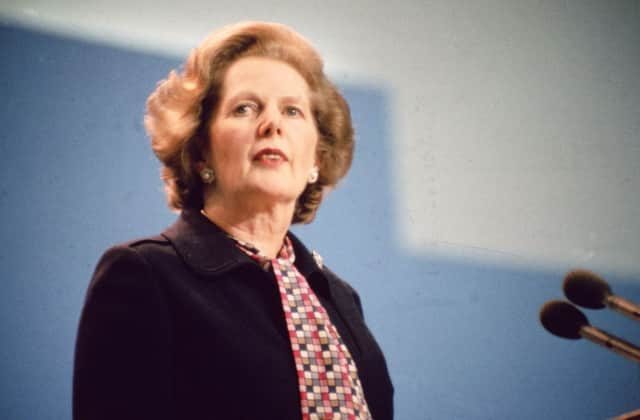Tories used Scotland as ‘poll tax guinea pig’


The poll tax was the most divisive issue of Margaret Thatcher’s government, provoking riots in cities across the UK. It was credited with bringing about her downfall and eventually losing the Conservative Party all its seats in Scotland.
CONNECT WITH THE SCOTSMAN
• Subscribe to our daily newsletter (requires registration) and get the latest news, sport and business headlines delivered to your inbox every morning
Advertisement
Hide AdAdvertisement
Hide AdBut senior Tory figures – including former chancellor Nigel Lawson – have always insisted that the decision to introduce in Scotland in 1989 a year earlier than England and Wales was just to avoid another rates revaluation.
However, the government papers from 1985 published today by the National Archive reveal how the Scottish Conservatives and then Scottish secretary George Younger persuaded Mrs Thatcher to introduce the community charge – known to most as the poll tax – rather than an alternative levy based on property.
The papers also include a memo by Oliver Letwin – then one of Margaret Thatcher’s senior policy advisers, now a Cabinet Office minister – warning about the electoral impact of the community charge on England and Wales.
But he noted: “We believe that [Scottish Secretary] George Younger may be offering a way out of this dilemma. He is clearly keen to use Scotland as a trail-blazer for the pure residence charge.”
Mr Letwin went on to describe the decision to introduce the poll tax a year early in Scotland as “the Scottish experiment” and he noted that until the effects were seen in Scotland “you [Mrs Thatcher] cannot be sure whether a radical move of this sort would be politically sensible”.
He also suggested that “a sudden change would not be as dramatic in Scotland as they would be in England and Wales.”
Earlier he raised concerns that introducing “a pure residence tax” – based on people not property – “would create too many big losers” in England and Wales.
And he also noted that a mixed property/residence solution proposed by then environment secretary Kenneth Baker would still leave 7.9 million in England worse off.
Advertisement
Hide AdAdvertisement
Hide AdHowever Mr Younger – under pressure from the Scottish Conservatives – was opposed to a “mixed tax” and pushed Mrs Thatcher for a residence-only option.
The papers also revealed that the poll tax was accelerated because of pressure on Margaret Thatcher from the Scottish Conservative Party and concerns over the government facing defeat at the party’s conference in Perth in May 1985, with a motion from the late David McLetchie calling for a postponement of the rates revaluation until a replacement could be found.
Mr Younger’s efforts to secure £63 million of rate relief from the Treasury for Scotland to deal with the extra costs imposed on taxpayers through revaluation, which had already been postponed two years, had failed with just £13 million on the table.
A memo on 30 April to the prime minister from her then political secretary Stephen Sherbourne, ahead of a meeting with Mr Younger the next day, noted: “You should be aware that the Scottish party organisation has been, in my view, fanning the flames on rates so that the position is even more politically explosive.
“As a result the conventional wisdom is that you will have to give an assurance that by the time of the next general election there will be something specific and detailed – on the statute book, if not yet operating – wholly or partially to replace the rates; and that a general undertaking to reform rates would be unacceptable.”
However, urging caution on what would become the most explosive issue of the Thatcher government, he added: “Better a bad conference in 1985 than a bad election in 1987.”
Labour’s shadow Scottish secretary, Margaret Curran MP, said: “Now we know for sure what many suspected during the 1980s – that the Tories saw Scotland as a test bed for the poll tax. All through this time, the Scottish Labour Party stood against it, and stood with people across Scotland who were hit.
“That George Younger was one of the main proponents of the tax, against advice from the Treasury, is astounding and shows just how out of touch the Scottish secretary was with the people of Scotland.”
Advertisement
Hide AdAdvertisement
Hide AdSNP depute leader Stewart Hosie MP said: “These declassified files confirm that key Tory figures plotted in secret to use Scotland as a guinea pig for the poll tax, so that they could avoid accusation of ‘being rash’ by trying to bring in a similar system in England and Wales.
“These memos reveal the arrogant and contemptuous attitude towards Scotland that is the hallmark of the Tories.
“Key figures who were responsible for inflicting the poll tax on Scotland are now senior members of the Tory-led government that has inflicted modern disasters like the bedroom tax on Scotland.”
SCOTSMAN TABLET AND IPHONE APPS